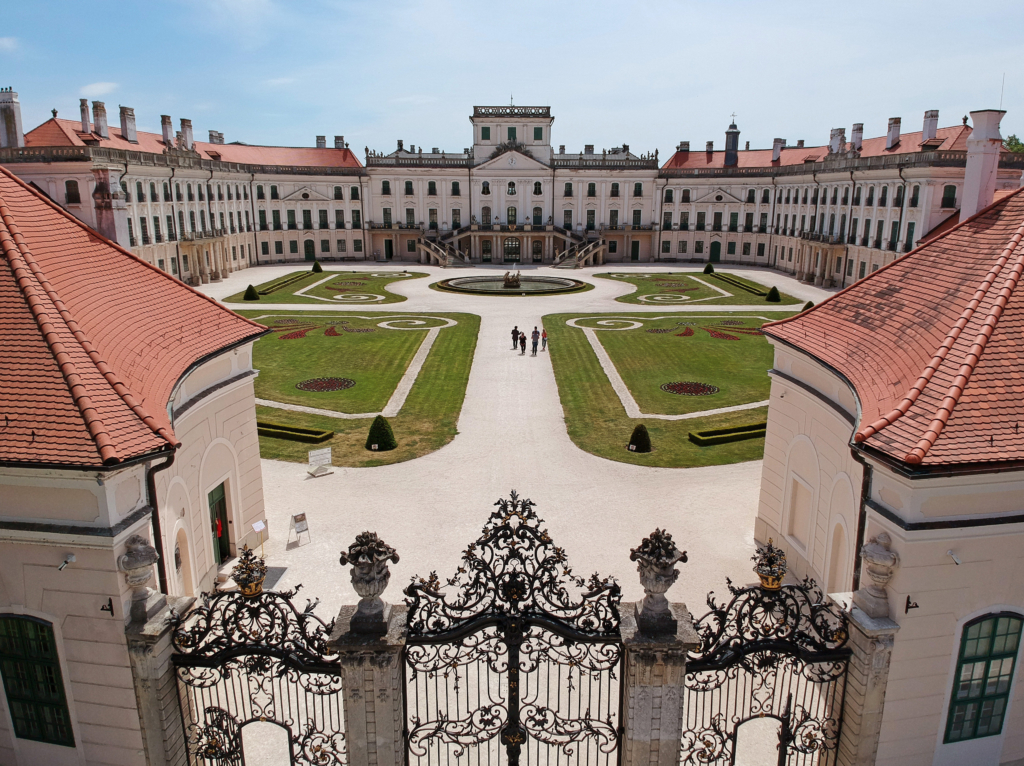4 reasons to visit Esterházy Palace in Fertőd − PHOTOS

In addition to the diversity and beautiful landscape, the Lake Fertő region also has a special cultural value. Since 2001, Lake Fertő and the surrounding region have been considered a UNESCO World Heritage site. Many enchanting towns and villages are located in this area. Fertőd is one of the most famous settlements: Esterházy Palace, a magnificent Baroque castle, also known as the “Hungarian Versailles”, is located in the centre of the small town.
1. The beauty of this aristocratic residence measures up to that of European royal courts

The construction and heyday of the castle complex are connected to Prince Miklós (Nikolaus) Esterházy, who was given the title of “the Magnificent” because of his building of palaces and taste for grand musical productions and luxurious festivities. The Esterházy Palace was built between 1762 and 1784 in Baroque and Rococo styles. It is often compared to Versailles, but some historians argue that it was rather influenced by Austrian prototypes, especially the Schönbrunn Palace.
The park and the landscape surrounding the castle represent the most mature work of Baroque garden art in Hungary. It was presumably designed by Ferenc Zinner and Jacoby, and in terms of style features, the park can be considered one of the purest compositions of European Baroque garden architecture and the only two-focus Baroque landscape system in the world.

Entering the masterful wrought-iron main gate, visitors can admire the beautiful courtyard surrounded by the castle wings. Originally, it was not used as a garden but as a place for festive acts, such as the inauguration of a lord-lieutenant. The main building with its rich architecture is dominated by sculptural compositions, like fountains depicting dragon-killing scenes or the richly decorated staircase leading to the Music Room and the Ceremony Hall.


2. Esterházy Palace provides an insight into a unique chapter of music history
In its heyday, numerous balls, theatrical performances, concerts, and hunts were held in Esterházy Palace, accommodating the high-ranking families of the period. On one occasion, Maria Theresa, the Queen of Hungary, also visited the aristocratic residence. Prince Nikolaus Esterházy hired the excellent Austrian composer, Joseph Haydn, as court composer and conductor of the orchestra. The palace played a significant role in the music scene of the period. Haydn lived and composed in Esterháza between 1766 and 1790.
The palace serves as a venue for diverse musical events, offering quality entertainment for music lovers. Unfortunately, concert ticket sales are currently suspended due to the pandemic situation.
3. Margit Cziráky’s beautiful Rose Garden

The Rose Garden, one of the residence’s unparalleled attractions, was created in 1908 by Duke Miklós V. Esterházy’s wife, Margit Cziráky. Based on former photographs and descriptions, the garden was reconstructed in 2005. Walking through the 220-metre-long, cross-shaped trellis system and the central pavilion, visitors can admire more than 8,000 rose varieties in Hungary’s oldest rose garden.
The park and the Rose Garden reopened on May 22, but the interior of the building and the museum are still closed due to the coronavirus pandemic.


4. Lavender harvest in Esterháza

The lavender field in Eszterháza awaits visitors every year from the second half of June. In the afternoon, children can attend creative workshops and taste lavender tea.
Source: Daily News Hungary





